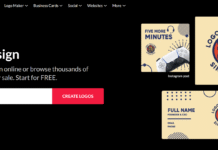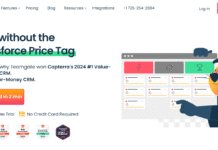How to Validate Startup Idea Before Spending a Dollar
Introduction
Every entrepreneur dreams of building a product that changes the world, but most startups fail because they never confirm if the world actually needs what they are building. Before spending money, time, or energy, founders must learn how to validate startup idea properly. Validation is the process of confirming that your idea solves a real problem for a specific audience and that people are willing to pay for it.
Validating your idea early saves months of wasted work. It helps you discover market realities before writing code or hiring a team. By learning how to validate startup idea, you can turn uncertainty into clear direction. This article outlines practical, low-cost methods that founders can apply right now to test demand, collect data, and ensure their idea has true potential before investing resources.
Step 1: Start with the Problem, Not the Product
The first step to validate startup idea is understanding the problem deeply. Many entrepreneurs begin with a solution in search of a problem, which leads to wasted effort. You need to focus on a real pain point that affects people frequently and emotionally.
Talk to your target audience before building anything. Ask about their daily struggles and how they currently deal with those challenges. For example, if your idea is about a productivity app, find out how people organize their work today and what frustrates them. The goal is not to sell but to learn.
Document your findings and write a short problem statement. For example: “Remote teams struggle to keep track of project updates in real time.” When you define the problem clearly, you set the foundation for a validated idea.
If you cannot identify a clear, repeated pain, stop there. You cannot validate startup idea without a strong problem to solve.
Step 2: Identify and Test Your Assumptions
Every business idea is built on assumptions. Listing them helps you validate startup idea faster and smarter. Write down what you believe to be true about your users, pricing, and product features. For example, you might assume users will switch from competitors, pay monthly, or prefer a mobile app.
After listing these assumptions, rank them by risk. The riskiest assumptions are the ones that can break your idea if they prove false. These are what you must test first.
Use surveys, interviews, or online polls to validate or reject each assumption. Ask potential users how they behave today and how likely they are to try something new. You may find that your assumption about willingness to pay is wrong, which will save you from unnecessary spending later.
Validation is about learning quickly. The more assumptions you test, the faster you validate startup idea with confidence.
Step 3: Research the Market and Existing Demand
Before spending money, research whether people are actively looking for solutions similar to yours. Market research is a low-cost but powerful way to validate startup idea.
Use keyword tools to check search volume for phrases related to your idea. If thousands of people search for terms like “best project management app” or “find freelance designer,” it means demand exists. If search volume is nearly zero, you may need to reframe your problem or target audience.
Study competitors carefully. Analyze their websites, pricing, and user feedback. Look for complaints, unmet needs, or gaps in their offerings. These gaps are opportunities for differentiation.
Join online communities where your target users spend time. Observe their conversations. Are they discussing the same pain you want to solve? Market validation happens when you can prove that people already care about the issue.
This step helps you validate startup idea before writing a single line of code.
Step 4: Talk to Potential Customers
The fastest and most accurate way to validate startup idea is through direct conversations with potential customers. Aim to conduct at least 15 to 20 structured interviews with individuals who fit your target profile.
Ask them open-ended questions like:
-
What is the biggest challenge you face when dealing with this problem?
-
How do you solve it right now?
-
How much would you pay to have it solved better?
-
What would make you switch from your current solution?
These conversations provide clarity about demand, willingness to pay, and emotional engagement. Avoid hypothetical questions such as “Would you use this product?” Instead, focus on real behaviors.
Take detailed notes and look for repeating patterns. If multiple people express the same frustrations and interest in paying for a better solution, you are moving toward validation.
Real feedback is worth more than opinions. By speaking directly to users, you validate startup idea through genuine human insight rather than assumptions.
Step 5: Build Simple Validation Experiments
Validation does not require a finished product. You can validate startup idea through quick, affordable experiments that test demand.
Start with a landing page describing your idea, benefits, and a call to action such as “Join the Waitlist” or “Pre-order Now.” Use free tools to design this page and share it across communities or social platforms. Measure how many people sign up. A high sign-up rate is a strong validation signal.
If possible, create a fake-door test. Offer multiple pricing options or features and track clicks. This approach reveals what users value most before you spend money building it.
You can also use a manual or “concierge” approach. Offer the service manually to a few early customers and observe if they continue using it or refer others. This low-cost strategy shows if your idea provides real value.
The key is to experiment continuously until the data supports your assumptions. If no one shows interest, that result is equally valuable—it means you should pivot early instead of wasting months.
Step 6: Measure Real Engagement and Commitment
To validate startup idea effectively, you need measurable results, not just verbal encouragement. Numbers give clarity. Track the following indicators:
-
Percentage of users who sign up after visiting your landing page
-
Number of people who open your emails or click your call-to-action links
-
How many potential users agree to pre-order or commit time for testing
-
The frequency of repeat interactions or referrals
A common benchmark for early validation is achieving a 5 to 10 percent conversion rate on your test page. If you reach or exceed this, it’s a sign of genuine interest.
Beyond numbers, observe user behavior. Do they share your page with friends? Do they ask when the product will launch? Behavioral signals are stronger than words.
Tracking engagement helps you validate startup idea based on facts rather than feelings.
Step 7: Test Willingness to Pay
Interest alone does not confirm demand. True validation happens when people are willing to pay. To validate startup idea financially, introduce small monetary tests.
Offer an early-bird price, such as “Pre-order today and get lifetime access for $20.” If users make payments or commit deposits, your idea has real traction. Even a small number of early buyers can confirm your concept’s value.
Alternatively, use fake-door pricing tests. Show several pricing options and measure which one attracts the most clicks. This helps you understand perceived value without needing a full payment system.
These experiments prove whether your idea solves a pain important enough for customers to invest in. Without payment validation, you only have interest, not demand.
Step 8: Refine and Iterate Based on Feedback
Once you gather enough data, review what it tells you. The goal is to validate startup idea by finding patterns that indicate real market fit.
If customers express interest but hesitate on price, adjust your pricing model. If they like your concept but dislike the delivery method, tweak your format. Each feedback loop improves your idea.
Sometimes validation means pivoting completely. Many successful companies began as something else. Slack started as an internal communication tool for a gaming company, and Twitter evolved from a podcasting project. Both succeeded because the founders listened and adjusted early.
Iterate until your idea resonates clearly with users and early adopters start asking when it will launch. That excitement means you’ve achieved validation.
For detailed frameworks and growth strategies to improve validation, visit startup insights.
Advanced Frameworks to Validate Startup Idea
Build a Pre-Launch Community
A powerful, low-cost way to validate startup idea is to build an early community around it. Communities give you a continuous feedback loop and help confirm long-term interest.
Start by creating a simple social media group, Telegram channel, or email newsletter where people interested in your problem space can join. Share useful insights, tips, or industry updates rather than selling directly. When you later present your idea to this group, their reactions will show whether it resonates.
Communities also help you test multiple concepts before launch. For instance, if you share three potential product ideas and one gets significantly more engagement, that’s a validation signal.
Many modern startups, from Notion to Figma, grew organically through early community members who later became loyal users and ambassadors. When you build community first, you validate startup idea before committing to development.
Use the Pretotyping Approach
Pretotyping is a validation method coined by Alberto Savoia, former Google engineer. It’s about testing the concept of your idea before even building a prototype. Pretotyping allows you to validate startup idea using creativity rather than code.
For example, you can design fake screenshots or record a short demo video showing what your app would do. Then share it with your target audience and track their reactions. If people request access or ask when it will be available, that interest validates your concept.
Another pretotyping method is the “Mechanical Turk” model. Offer your service manually behind the scenes while users think it’s automated. This lets you measure real demand before building systems.
Pretotyping saves time, money, and energy. Instead of wondering if your idea will work, you get data to support or reject it. It’s one of the smartest techniques to validate startup idea quickly and cheaply.
Conduct A/B Tests and Messaging Experiments
Your messaging is part of your validation. Even the best idea can fail if it’s communicated poorly. To validate startup idea, test different value propositions through A/B testing.
Create two or three versions of your landing page with slightly different headlines, benefit statements, or visuals. Drive small amounts of traffic to each and see which one performs better. The version with the highest conversion rate tells you how your audience perceives value.
This experiment doesn’t require large budgets. You can use free analytics tools to measure clicks, signups, and time spent on the page. Each result helps refine your messaging and clarify what truly attracts attention.
Messaging validation ensures that your communication connects emotionally with the audience before you invest in marketing or branding.
Validate Startup Idea with Email Campaigns
Another cost-effective way to validate startup idea is through email outreach. Create a short message explaining your idea and ask recipients a specific question, such as “Would this help solve your current challenge?”
Target professionals in your niche or existing LinkedIn contacts. The open and reply rates will tell you how relevant your idea sounds. If 20 out of 100 people reply with curiosity or ask for more information, that’s a good sign.
You can also send a mini-survey via email to gather quantitative data. For instance:
-
How big of a problem is X for you (1–5)?
-
How much would you pay for a solution?
-
Which features would you prioritize?
These insights help you validate startup idea using direct responses from people who might actually become customers.
Use Online Communities and Marketplaces
To find early signals of interest, engage with existing online communities like Reddit, IndieHackers, or specialized Slack groups. Start discussions around the problem you are solving. Do not promote your product immediately. Instead, ask how others deal with the same issue.
By observing comments and upvotes, you’ll quickly learn whether your idea resonates. If users request more details or share similar frustrations, it’s validation.
In some cases, you can even list your idea on platforms such as Product Hunt or Betalist to gauge reaction. Early signups and feedback can confirm demand long before full launch.
These platforms offer free visibility and a global audience, making them excellent places to validate startup idea with real-world data.
Collaborate with Potential Partners
Partnerships are another underrated method to validate startup idea. If established companies or creators express interest in collaborating with you, it’s a strong signal that your concept has merit.
Reach out to small businesses, agencies, or influencers whose audiences match your target market. Offer to test your concept together in a pilot format. If they agree to feature your product or help distribute it, your validation gains credibility.
Partnerships can also open new channels for data collection, giving you access to real customers for interviews or trials.
The willingness of others to align with your idea is one of the most reliable indicators of potential success.
Build a Prototype When Data Supports It
After gathering enough early validation signals, it’s time to create a simple prototype or minimum viable product (MVP). A prototype is not the full version of your idea but a basic version that demonstrates the core value.
Building an MVP allows you to validate startup idea under realistic conditions. Users can interact with your product and provide feedback on usability, design, and value.
Use free or affordable tools such as Figma, Webflow, or Bubble to create your MVP. Keep it lean and focused only on the essential feature that solves the main problem. Avoid adding extras until you confirm that people find value in the core concept.
Early testers are invaluable. Observe how they use the prototype and what confuses them. Their behavior reveals what matters most, guiding your next iteration.
Measure Key Validation Metrics
To know when you’ve truly validated your concept, track key performance indicators. Quantitative data provides objective proof that your idea works.
Common validation metrics include:
-
Conversion rate (signups or purchases divided by total visitors)
-
Retention rate (how many users return after first use)
-
Referral rate (how many users share your idea with others)
-
Engagement metrics (time spent using your product or reading your message)
When these metrics exceed initial expectations, you can confidently say you’ve managed to validate startup idea successfully.
If results fall short, don’t view it as failure. Each metric teaches you something about the market, pricing, or positioning. Validation is an ongoing cycle of measurement and refinement.
Learn from Failed Validations
Even when an idea fails validation, it is not wasted effort. Every unsuccessful attempt teaches lessons that bring you closer to success.
Analyze why your idea didn’t connect. Was the problem too small? Was your target audience wrong? Did your messaging fail to communicate value? Understanding these points helps you pivot effectively.
Many of today’s most successful startups were born from previous failed concepts. Instagram evolved from a location-based app called Burbn, and Slack came from a game development company. Both succeeded because their founders learned quickly how to validate startup idea after early setbacks.
Failure during validation is simply market feedback delivered early enough to save you from larger losses later.
Combine Data with Intuition
While data is vital, entrepreneurship also requires intuition. Numbers tell you what’s happening, but intuition helps interpret why. The best founders blend both.
Use your instincts to spot opportunities that data alone might miss. Sometimes early data seems weak, but your gut feeling about the problem may still be right — you just need to test it differently.
The key is balance. Data ensures objectivity; intuition ensures creativity. When both align, you can confidently validate startup idea and move forward with clarity.
Prepare for Funding and Scaling
Once you have validated your concept, you are ready to attract investment or scale operations. Investors love data-backed ideas. Show them evidence from your validation process number of signups, conversion rates, testimonials, or pilot results.
Present your findings in a concise report that demonstrates traction. This proves that your business is not just an idea but a tested opportunity. Validation data builds investor confidence and opens doors to early funding.
Even if you plan to self-fund, validated data helps you allocate resources efficiently. You’ll know which channels work, who your real customers are, and what price points generate the most interest.
Validation is not just about testing; it’s about preparing for intelligent growth. When you validate startup idea completely, every next step becomes predictable and strategic.
Continuous Validation After Launch
Validation does not stop once your product is live. Markets change, user expectations evolve, and new competitors emerge. Successful founders continuously validate startup idea even after launch.
Monitor feedback channels, conduct regular user surveys, and keep testing new features. Treat every update as a small experiment. Continuous validation ensures your startup stays aligned with real customer needs over time.
Companies that maintain this discipline stay ahead of trends and avoid stagnation. Validation becomes part of their culture, not a one-time project.
Conclusion: The Power of Early Validation
The journey to validate startup idea is the foundation of all successful entrepreneurship. Validation is not about perfection; it’s about direction. It tells you whether to move forward, pivot, or stop before wasting resources.
Here’s the formula successful founders follow:
-
Start with a real, painful problem.
-
Test assumptions and measure evidence.
-
Build fast, cheap experiments.
-
Track engagement and willingness to pay.
-
Learn, refine, and repeat.
By practicing these principles, you’ll eliminate guesswork and build with confidence. Whether you’re creating a digital app, physical product, or service, validation ensures you invest wisely and deliver real value.
The entrepreneurs who master validation don’t just build startups they build certainty. In a world full of ideas, the winners are those who take time to validate startup idea before spending a single dollar.












































